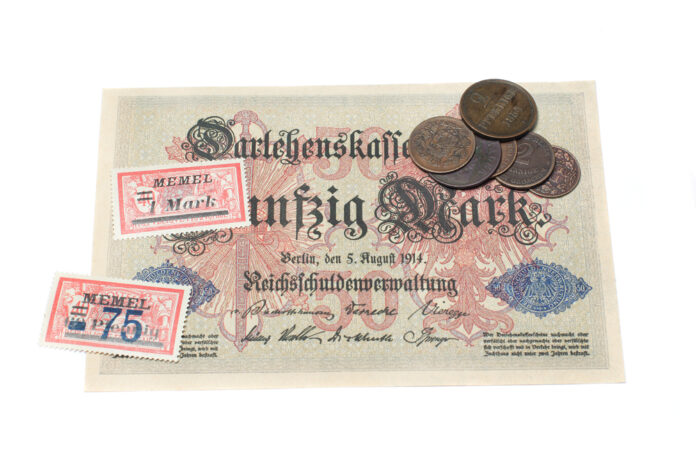Collecting coins and stamps is more than just a hobby—it’s a journey through history, culture, and art. Whether you’re intrigued by the intricate designs of ancient coins or the stories behind rare stamps, starting a collection can be a rewarding and enriching experience. This guide will walk you through the essentials of beginning your own coin or stamp collection, highlighting expert advice and offering practical tips to help you embark on this fascinating pursuit.
Why Collect Coins and Stamps?
Collecting offers a unique opportunity to explore different countries and cultures. It’s a fulfilling pastime that can be enjoyed by individuals of all ages and can accommodate various interests and budgets. With over 20 million stamp collectors worldwide, it’s a hobby that fosters connections and shared passions.
Getting Started with Coin Collecting
Begin with What You Have
A great way to start collecting coins is by examining the change in your pocket. Familiarize yourself with different denominations, mint marks, and designs. This hands-on approach allows you to understand numismatic terminology and the basics of coin anatomy.
Explore Different Themes
Consider focusing your collection on specific themes:
- Time Periods: Collect coins from a particular historical era.
- Mint Marks: Focus on coins produced at different mints.
- Error Coins: While most error coins are never released, those that are can become valuable collectibles due to their rarity. Evaluate coins for unique characteristics that might make them special.
Acquire Coins Through Various Means
Finding coins can be both challenging and exciting. Here are some avenues to explore:
- Coin Rolls from Banks: Sorting through bank rolls can yield unexpected finds.
- Coin Shows and Dealers: Engage with reputable dealers and compare prices to avoid overpaying.
- Auctions: For rare items, auctions can be an excellent resource.
Evaluate each coin based on its appeal, luster, damage, and wear—key factors that influence a coin’s grade.
Participate in coin clubs to share your collection and gain knowledge from fellow enthusiasts. Organizations like the American Numismatic Association offer extensive networks and resources.
Understand Coin Grading
The Sheldon coin grading scale ranges from 1 to 70 and determines a coin’s value based on quality, wear, and luster. Grading is subjective, so it’s beneficial to deepen your understanding by consulting resources like the Official ANA Grading Standards for United States Coins.
Getting Started with Stamp Collecting
Start with a Broad Collection
Begin your stamp collection with stamps from around the world. You can gather stamps from old correspondences, friends, or inherited collections. This approach provides a diverse foundation and allows you to discover what aspects of stamp collecting interest you the most.
Organize and Preserve Your Stamps
Proper storage is crucial to maintain the quality of your stamps. Use a stockbook to keep them organized and protected from damage. Ensure that you:
- Use acid-free paper to prevent deterioration.
- Store your collection away from direct sunlight and moisture.
- Handle stamps with stamp tweezers to avoid oils and dirt from your hands.
Investing in essential tools like magnifying glasses, perforation gauges, and watermark detectors can enhance your collecting experience and help you identify unique features of stamps.
Choose a Focus for Your Collection
Stamp collecting offers various traditional approaches:
- By Monarch or Era: Collect stamps issued during a specific reign or period.
- By Country: Focus on stamps from a particular nation.
- By Rarity and Value: Seek out stamps that are rare or have significant historical value, such as Australia’s Kangaroo stamps.
A stamp catalogue, like the Stanley Gibbons Simplified Catalogue of Stamps, is an invaluable resource for organizing your collection and learning about different stamps.
Mounting and Displaying Stamps
Mount your stamps carefully to preserve their condition:
- Stamp Hinges: An economical method for affixing stamps to album pages, suitable for used stamps.
- Hingeless Mounts: Protective sleeves ideal for mint condition stamps, preventing damage.
Properly displaying your stamps not only preserves them but also enhances their visual appeal.
Essential Tools for Collectors
Whether you’re collecting coins or stamps, certain tools are indispensable:
For Coins:
- Coin albums or folders
- Coin capsules or holders
- Soft gloves for handling
- Magnifying glass for detailed examination
For Stamps:
- Stamp tongs (tweezers)
- Stockbooks or albums
- Perforation gauge
- Watermark detector fluid and tray
Investing in quality tools will enhance your collecting experience and help maintain the condition of your items.
Storing and Preserving Your Collection
Coins
- Avoid Handling with Bare Hands: Oils and dirt can tarnish coins.
- Store Properly: Use coin holders or capsules to protect against environmental damage.
- Keep in a Stable Environment: Fluctuations in temperature and humidity can affect coins’ condition.
Stamps
- Use Acid-Free Materials: Prevents chemical reactions that can damage stamps over time.
- Protect from Light and Moisture: Both can cause fading and deterioration.
- Handle Gently: Use stamp tongs to prevent tears or creases.
By taking these precautions, you’ll ensure that your collection remains in excellent condition for years to come.
Connecting with the Collecting Community
Engaging with other collectors can greatly enhance your enjoyment and knowledge. Joining online forums and local clubs allows you to:
- Share experiences and discoveries
- Seek advice and tips
- Participate in swaps and purchases
The community is supportive and encourages learning at your own pace, emphasizing the importance of enjoying the hobby.
Conclusion
Starting a coin or stamp collection is an adventure filled with discovery and learning. By focusing on areas that interest you and utilizing the resources available, you can build a collection that is both personally meaningful and potentially valuable. Remember to approach your new hobby with patience and enthusiasm, and let your collection tell the stories of time, culture, and artistry.
Happy collecting!


